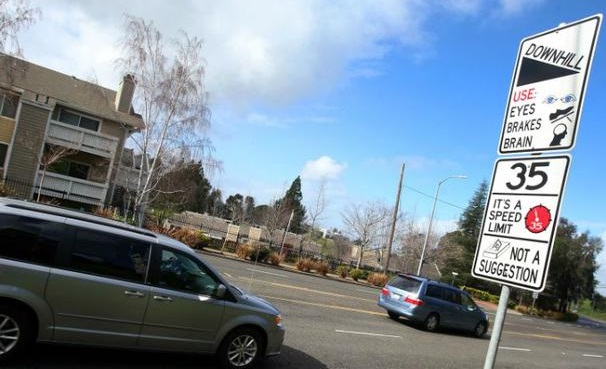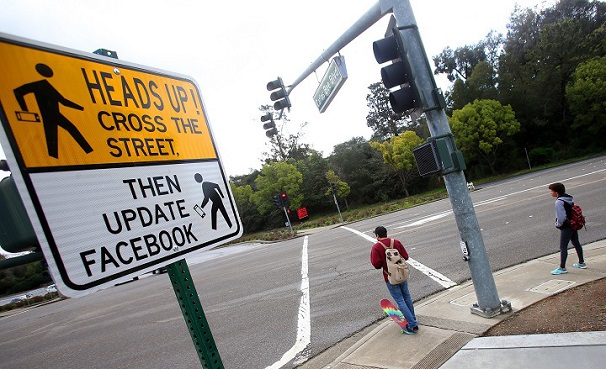You might have noticed by now that Health and Safety posts frequent the Label Source blog almost daily. As suppliers of health and safety signs and warning labels, we not only understand the importance of having the correct signage in compliance with health and safety legislations in your work place, but are also advocates for celebrating health and safety rules and regulations, which are put in place to protect us, saving lives and minimising risk.
Over the past few months in particular, health and safety has become somewhat of a scapegoat for businesses, blaming health and safety legislations for bizarre decisions and causing public hostility towards health and safety, which is something that every one of us needs at some point in our lives in order to live a safe and risk-minimised life (wouldn't that be nice!)

Many don't actually realise how vitally important health and safety legislation is, and unfortunately through tragic accidents which make the press, we see examples almost daily of deaths, injuries or property damage due to a relaxed attitude towards health and safety, with companies in all areas and of all sizes being prosecuted almost weekly for breaches of these legislations.
Not having the appropriate health and safety signs and hazard warnings in place can lead to fatal accidents, as these three devastating news stories show:
1. Farmer in Court over Driver's Electrocution
A HGV driver was electrocuted to death after hitting a power line which had no corresponding safety signage or barriers.
2. Safety Failings put Finchley Worker in Burns Coma
A labourer from North London received life-threatening burn injuries in an explosion on a farm after severing a 415-volt electrical cable, unaware it was live. There was no health and safety signage in place highlighting the live cable.
3. Developer Prosecuted after Lorry Hit Power Line
A developer in Kettering has been fined after a lorry hit a power line which caused a power cut in 11 properties. Similarly, the line had no health and safety signs.
The important thing to highlight here is that not only do these three examples show tragic injuries and even fatalities due to lack of health and safety signage, but they also show three different cases of employers or individuals being prosecuted for their failings. Make sure that your company meets the appropriate health and safety legislations by ordering your Safety Signs from Label Source today.
Warning symbols are everywhere. Those black-and-yellow triangles can be found in offices, on construction sites, at your child's school, and sometimes even in seemingly gentler places like parks and swimming pools.
But do you know what those symbols mean? The ISO (International Organisation for Standardisation) strive to ensure that the imagery used on warning signs and labels is as simple and as straightforward as possible, and yet you'd be flabbergasted by the number of people who can't name a common hazard from its corresponding warning symbol.
With that in mind, let's have a quick health and safety lesson - all of the following symbols are used internationally, and each one can be found in Label Source's Warning Symbol Labels department. Would you have known what they all meant?
Here's an easy one to start with - this is an electrical warning symbol, used to warn of hazards that may cause electric shocks or electrocution.
This hot surface warning symbol is somewhat less common, but it's just as important - used correctly, it will help to prevent burns and other injuries.
Do you know what this one this? It's a harmful hazard warning symbol, specifically for chemical hazards.
You may never have seen this particular symbol, but it is quite common in hospitals and laboratories. It's a laser hazard warning symbol, and given how dangerous laser radiation can be, it's another one that's very important in many cases.
Did you know all of these? There are plenty of others in our Warning Symbol Labels department - click here to expand your knowledge further!

We at Label Source would like to applaud the American city of Hayward, California, who have taken a rather novel approach to road safety. One can only assume that Hayward's residents weren't paying enough attention to the usual traffic signs, because one main road is now dotted with a slightly more unusual breed of signage:
"35 - It's a speed limit, not a suggestion!"
Downhill - Use: Eyes, Brakes, Brain"
Frank Holland, speaking on behalf of the city, said: "The idea is for people to do a double take and then realize, 'Oh, they want me to be careful on the hill. Standard traffic signs often become white noise...we wanted to use humour to get people to take a second look and think."
It's a great idea, and Hayward's attention-grabbing ploy seems to have worked - not only are residents paying more attention to the signs, the signs have actually made international news!
And motorists aren't the only targets of these humorous signs. They've got one for pedestrians, too:

The British public (sometimes justifiably) have very little patience for health and safety measures, and we think it would be fantastic if local councils took a leaf from Hayward's book and started using a bit of humour - it is a great way to capture people's attention and ensure that hazards don't go ignored.
It's important, though, to note that Hayward's rib-tickling signs aren't enough on their own; one local resident admitted that the signs were "cool", but added that "it's hard to see the speed limit". Hayward haven't replaced their standard road safety signs with the ones in these photos; they've just supplemented them with something fun and light-hearted. Both are important!
Photos: Aric Crabb/Bay Area News Group
The Provision and Use of Work Equipment Regulations 1998 (PUWER) requires work equipment and plant to be maintained so it remais safe and the maintenance operation is carried out safely.
Maintenance of plant and equipment in an industrial factiory is carried out to prevent any problems from arising, to put faults right and to ensure any equipment is working effectively. Plant maintenance usually refers to the strategies, methods and practices used to keep an industrial factory running smoothly. Plant maintenance can include anything from regular checks of equipment to make sure they function properly to even making sure rubbish bins and toilets are cleaned properly. Mainenance may be part of a planned programme or may have to be carried out at short notice after a breakdown. It always involves non-routine activities and can expose those involved (and others) to a range of risks.
Plant Maintenance Labels
The primary aim of plant maintenance is to create a productive working environment that is also safe for workers and any visitors to the plant. A successful maintenance programme will make both plant and equipment more reliable. Fewer breakdwons will mean less dangerous contact with machinery is required, as well as providing better productivity and efficiency and consequently lowering costs.
Plant Maintenance and Electrical Tags
Label Source offers a variety of Plant Maintenance Signs, Labels and Tags, all of which can be used in the maintenance of industrial premises and the associated equipment, machinery, fittings, fixtures, instruments and tools. Our range of plant maintenance products alert users, machine operators and any service personell of rsisk or dangers associated with using the equipment in the plant. We also supply a range of maintenance labels that can be used to assist in the regular inspection and servicing of your machinery.

Electrical Maintenance Safety Signs
If you can't find the Plant Maintenance labels that you are looking for, or if you simply wish to discuss some of our plant maintenance products then call Label Source on 0800 3761 693 from the UK, or 0044 1443 842769 if you're calling from abroad.
Plant Maintenance Equipment Labels
As of late, the health and safety culture has come under fire from a number of angles due to some rather questionable 'health and safety' stories making the national press. Indeed, over the past few months the papers have been full of peculiar decisions by businesses which are reportedly due to health and safety - including Newcastle racecourse banning picnics due to visitors' chairs supposedly presenting a health and safety issue. Similarly, it was reported that factory workers in Plymouth were left in tears after their wedding rings were cut off due to health and safety.

To many, these decisions seem unfair, unjust and perhaps even a little bit silly. Many have spoken out about how our health and safety culture has 'gone mad' or is 'ruining childhood'. The truth is, however, that it isn't the health and safety culture which has run amok - rather, it is the businesses who are willing to use health and safety as an excuse for their decisions. The health and safety blame game has developed in such a way that the Health and Safety Executive (HSE) has developed a myth-busting panel who will independently challenge advice or decisions supposedly made in the name of health and safety they believe to be inaccurate or disproportionate.
Indeed, the HSE Myth Busters have spoken out about some ludicrous decisions made in the name of health and safety - including the Newcastle racecourse example we mentioned at the beginning of this blog - condemning these decisions, and stating that in fact these decisions have not been made in the name of health and safety.
As well as being damaging to the HSE's reputation, the health and safety blame game also presents us with a further problem with regards to health and safety itself. Blaming business decisions on health and safety is extremely damaging to health and safety as a whole; there are health and safety rules and legislations for any business and indeed almost any public place, and the rules are in place to save lives, protect safety and minimise any risk. It is vital that health and safety legislations are respected and followed - otherwise, we could be at risk of an increase in accidents and, potentially, fatalities.
Purchase your Safety Signs to make sure your place of work is complying with the health and safety legislations here.